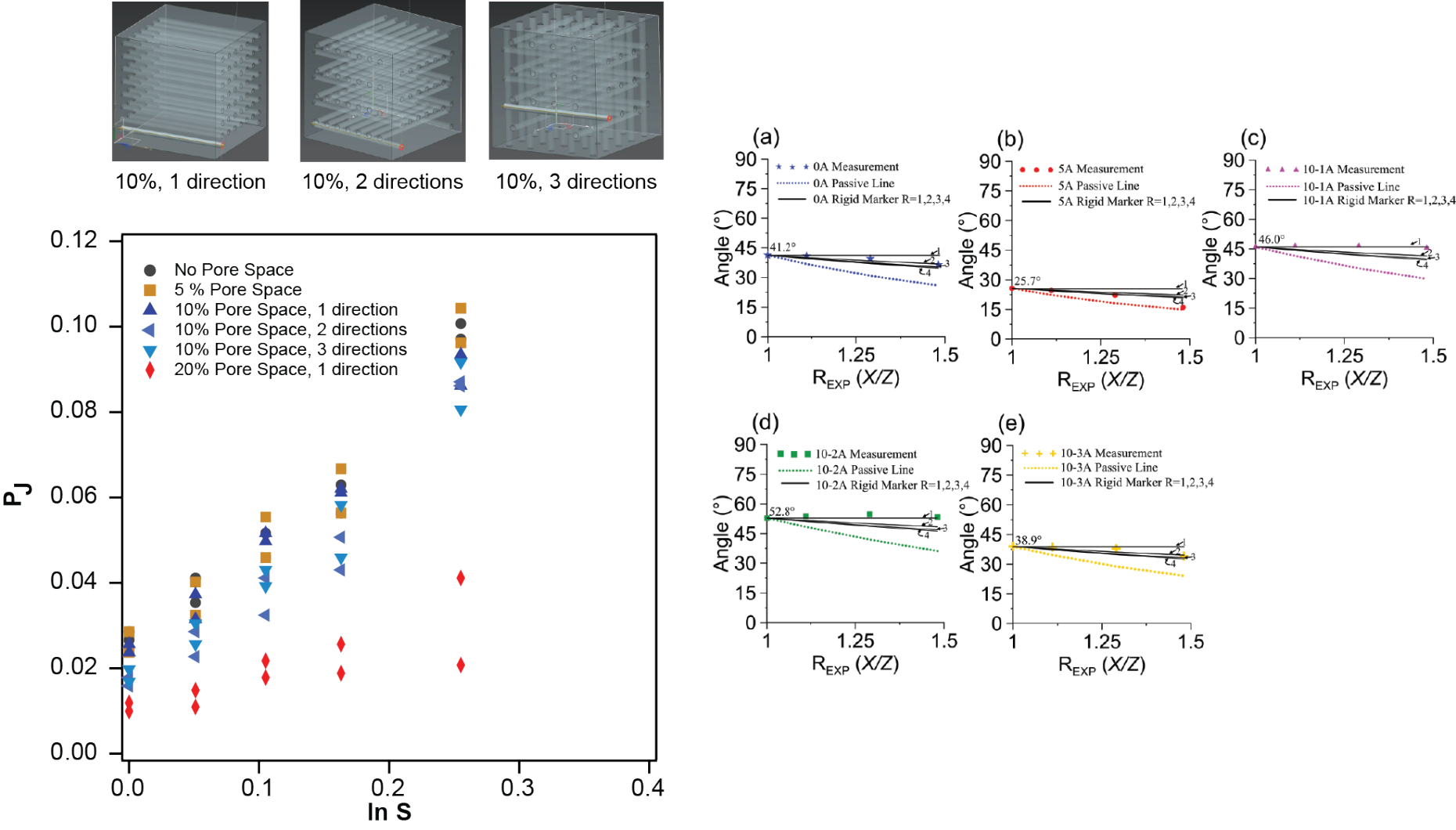Deformation of 3-D Printed Analogue Rocks
It is becoming common to correct paleomagnetic data and apparent polar wander paths for inclination flattening. The correction is based on a simple passive line model for pure shear, compactional deformation, and most often no experimental data is provided to justify that the rock has undergone passive deformation. There is little experimental data available to show how a rock behaves under deformation with respect to development of a magnetic anisotropy or deflection of remanent magnetization. In a novel approach we use 3-D printing technology with a magnetic ink to create analogue rocks that subsequently can be incrementally deformed. The change in the degree of AMS appears higher than expected for a line/plane model of strain response, except for the samples with 20% porosity. The samples were subsequently shortened incrementally normal to the printing plane. With 5% shortening, the initial compactional fabric changes from oblate to prolate and then becomes oblate with further compaction, as has been observed for progressive deformation in sedimentary rocks. Magnetic remanence on the other hand is compatible with a rigid particle in a viscous matrix.

Collaborations: P. Liu & A.M. Hirt, S. Pané & S. Gervasoni (Institute of Robotics and Intelligent System, ETHZ), C. Madonna (D-ERDW)
- A.M. Hirt, P. Liu, S. Gervasoni, G. Hu, S. Pané, 3D-Printed analog rocks: New perspectives for understanding the relationship between deformation and magnetic anisotropy
